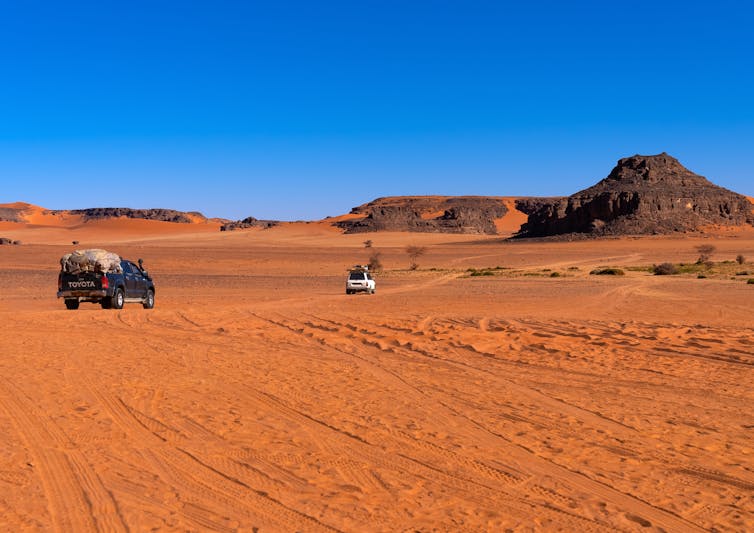Capital markets have long been a bellwether for near- and longer-term economic and societal sentiment. The rise of ESG (Environment, Social and Governance) focused transactions among business, government and the public is no exception.
Across the globe, capital market issuers, investors and financial institutions are responding to increased demand with solutions that satisfy the complex but complementary goals of financing business investments and helping to address important social and environmental issues, including climate change.
While numbers are just one view of this phenomena, they paint an impressive picture. In the most recent quarters, we have experienced dramatic growth in the sustainable debt markets with record issuances of more than US$915 billion in 2021, up by almost $500 billion from YTD2020 volumes.1 Growth has been particularly high for specific instruments, including growth of more than 4x in the sustainability-linked bond market this year compared to issuance in all of 2020, and growth of 3x in social bond issuance compared to this point last year.2
Behind the data, from our own ‘playing field’ perspective, this activity is rooted in a widespread mindset movement among business leaders and their diverse stakeholders. Increasingly, companies are grounding their decisions in how they raise and invest capital to align not only with their strategic objectives, but also with their sustainability objectives. Companies are increasingly adjusting their business models and seeking financing to support this transformation. And, their actions are matched by a very receptive investment community that wants to participate in this drive to a more sustainable economy.
ESG momentum is no longer centred on a few vertical sectors or early adopter industries. Today, interest in sustainable finance is enjoying strong horizontal growth across sectors, across the spectrum of corporate and institutional clients, and it cuts across every geography, including very active Latin American markets.
In the early days, there was a strong commitment to the green bond market supporting renewable energy and climate change goals. Most recently, we see the emergence of sustainability-linked products geared to issuers and investors with more diverse ESG objectives, including the many social, health and inequality issues amplified during the pandemic.
As participants in this dynamic marketplace, we have helped develop the Canadian sustainable finance market, including supporting notable social bonds, sustainability bonds, and sustainability-linked products. Our Sustainable Finance Group is helping a wide range of clients access sustainability-linked products that connect pricing and pre-established sustainability targets. This enables a greater range of organizations and sectors to get involved, and set ambitious targets to reduce their greenhouse gas emissions or meet other material sustainability objectives.
Finding solutions to new market challenges
Naturally, amid the opportunities, the field of sustainable finance faces challenges. Among them, investors want to measure the impact of their investments, including their effectiveness at meeting their stated goals, and their longer-term influence on ESG issues. They must access appropriate data that is relevant, accurate and comparable. On the company side, organizations must gather and transparently disclose information on their activities to meet investor and stakeholder expectations.
To do so, organizations must design and execute a very individualized corporate sustainability strategy that balances their business objectives and stakeholder priorities with the need to address their most material social and environmental issues. They must also set meaningful goals and establish the processes to compile the necessary data, so they can share a compelling narrative with the capital markets. This requires specialized advice and support to build a sustainable finance program, tailored to an organization’s mandate, or evolving market trends, such as the current shift away from a focus on individual financings (e.g., a green bond to fund a single green project) to sustainable financing strategies that reflect a company’s longer-term sustainability journey.
Seeing success
At Scotiabank, we are leveraging our organizational experience in the sustainability space, as a respected provider of financing and advisory solutions. We are steadily evolving our offerings, ranging from green products (e.g., green bonds and loans) that help clients transition to a low-emissions economy to diverse social instruments (e.g., social bonds and sustainability-linked loans with social KPIs) that help organizations meet other milestones towards a sustainable economy.
In lockstep with client demand, we established our Sustainable Finance Group in June 2020. The team, comprising talented professionals who bring together robust capital markets expertise and leading-edge sustainability backgrounds, builds on Scotiabank’s longstanding ESG leadership and works closely with partners across the Bank, including the Social Impact and Sustainability team, among others.
With the mandate to provide leading ESG and sustainable finance advice and solutions to corporate, financial, public sector, and institutional clients across the Bank’s global presence, the Group also supports Scotiabank’s own climate change initiatives, including the Bank’s commitment to mobilize $100 billion to reduce the impacts of climate change by 2025.3
Today, in a short timespan since the team’s inception, we are very proud to have doubled our Sustainable Finance Group size, increased the range of financing products and advisory services we provide, and significantly grown our transaction volumes. A few noteworthy transactions across our global network illustrate our own journey in the space:
In Canada, we recently served as Joint Bookrunner and Co-Sustainability Structuring Advisor on TELUS’ C$750 million inaugural sustainability-linked bond, the first of its kind in the Canadian market.
In the US, we served as Joint Lead Arranger and Joint Bookrunner on Dominion Energy’s US$6.0 billion sustainability-linked facility, and their US$900 million sustainability-linked club revolver, in addition to acting as Joint Bookrunner on NextEra Energy’s US$1.5 billion 7-year green bond issuance.
In Latin America, we were named Joint Bookrunner on Suzano’s US$1 billion 10-year sustainability-linked bond, the company’s third SLB transaction. And, we were Sole Agent and Sole Sustainability Structuring Advisor on Telefonica Colombia’s US$53 million equivalent 3-year nonrevolving credit facility, its first sustainability-linked loan.
In Europe, we served as Joint Bookrunner on VMED O2’s inaugural US$850 million 10-year green bond transaction.
And, in Asia, Scotiabank provided a US$150 million green loan to Singapore-based Ascendas REIT to finance the acquisition of U.S.-based technology assets, where we additionally advised on a bespoke structure for their inaugural green interest rate swap to hedge the facility.
These and many other innovative solutions have helped distinguish Scotiabank in rankings and league tables managed among independent third parties. They include Bloomberg, who for 2020-21 has highlighted Scotiabank as the current #2 Bookrunner of labelled CAD-denominated ESG Bonds issued by Corporates, Governments and SSAs, and Thomson Reuters Loan Connector, who ranked Scotiabank 7th in their 1H 2021 Green and ESG Loan League Table of Top Tier Lenders in the Americas.4
While these accolades highlight our dedication to delivering client-centric, holistic coverage to our clients, they also speak to the way that capital markets can help business and society reach bigger picture solutions to our shared opportunities and challenges. Since we expect client interest in ESG and sustainable finance products will continue to build in the coming years, from issuers, buyers, and across all geographies, Scotiabank is committed to responding to the call for sustainable capital.
1.BloombergNEF and Scotiabank, as at July 31, 2021.
2 BloombergNEF and Scotiabank, as at July 31, 2021.
3 Scotiabank’s Climate Commitments.
4 As at June 30, 2021





















